|

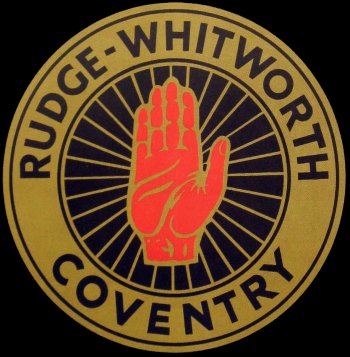



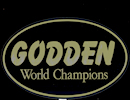


|
| |
|
| |
| |
John Hyam
Part 3 |
| |
| |
Syd van der Vyver
Cyril
Maidment & The Russian Tourists
Bill Longley
Wal Morton
George Bason
Johnny
Greenwood Jack "Red"
Monteith
The_Closure_of_New_Cross_June_1953
Ray Harris The Tebbys |
|
|
|
|
The Tebbys
& Speedway |
|
|
|
The name of Tebby was around speedway for many years - from 1939
until the mid-1970s. |
|
|
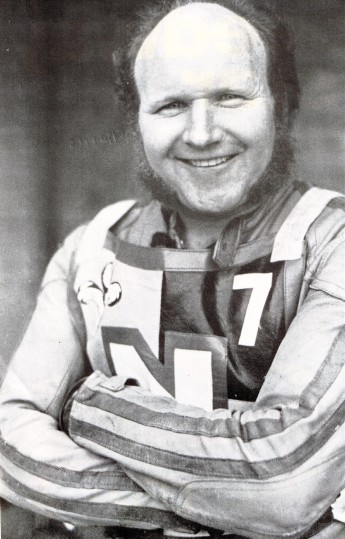 |
|
|
|
Photo:
Jim Tebby |
|
|
|
If asked to give Tebby a first name, most people will plump for
Jim, the chirpy character who was such a favourite with Wimbledon
in the 1960s and into the 1970s. His abrupt departure from Plough
Lane was a shock to many people - as it was the rider. Years of
loyalty to the Dons was suddenly cast aside in an abrupt and
controversial move by then Dons team manger Cyril Maidment. |
|
|
|
Tebby had just invested in new equipment for the 1973 season
when he was told by the Wimbledon management 'your services are no
longer needed.' It resulted in him moving on to Newport, where he
gave the Welsh track devoted service over the next couple of
seasons and rode in 94 matches for the Welsh club. |
|
|
|
The record books will show that Jim Tebby first appeared on the
senior racing scene as a 16 year old junior at Harringay in 1952
along with other aspirants like Roy Bowers and Jimmy Gleed, who
both went on to carve respectable niches in the sport.
I stand to be corrected on this, but I am certain that Stan and
Jim Tebby were the first-ever father-son to ride in a best pairs
event when they raced in a meeting at California in 1953. |
|
|
|
National Service calls in 1954 temporarily blunted Jim's speedway
aspirations. That means he was born in 1936 - then how come the
Tebby name was involved in speedway just three years later in
1939? The fact is it wasn't Jim but his father Stan, who for many
years acted as his son's mechanic. |
|
|
 |
|
|
|
Stan Tebby 1967 in France with Claude Boston on the left |
|
|
|
Stan was very much an amateur speedway rider. His name first crops
up at the California-in-England track in the few months before the
start of World War Two in September 1939. His post-war racing
career centred mainly on grass tracks in the home counties, as
well as the amateur speedway tracks like California and High
Beech. And for more than a dozen seasons spanning the 1960s and
early 1970s, Stan was a member of the group organised by Victor
Boston which staged speedway meetings at various venues in
Northern France. |
|
|
|
The bike that Stan used in France in the 1970s had unique
rear-suspension specially fitted for the bumpy French tracks. It
is now on display at the London Motorcycle Museum in Greenford,
Middlesex, along with race jackets used by Jim over the years. |
|
|
|
I knew the Tebby family very well. In the 1950s, and I was often a
weekend guest at their home in Amersham, Buckinghamshire. They
owned a variety of road motorcycles and gave me the free use of
one of them to explore this picturesque part of the English
countryside. |
|
|
|
Another highlight of my visits to the Tebbys was trips with them
to then Wimbledon and England star Ron How's pub at Missenden,
where other who used to drop in for a drink, to chat about
speedway and play a game of darts included Danny Dunton, Roy
Bowers and George Bason. |
|
|
|
|
|
|
|
|
|
|
Ray Harris |
| |
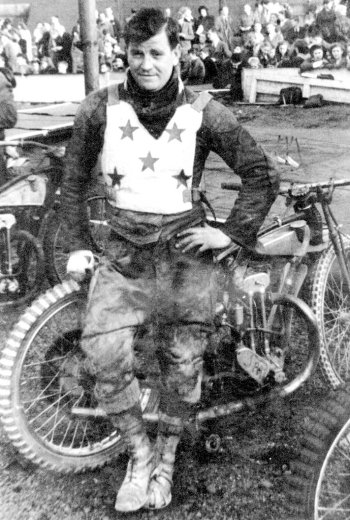 |
|
Courtesy of J Spoor |
| |
|
John
Hyam writes: When Ray
Harris died aged 85 years in April, 2005, it brought back a couple
of non-speedway memories about a rider who had such links with the
sport at Stoke. He spent 11 seasons with the club and made a
record 285 league appearances for the Potters. |
| |
| |
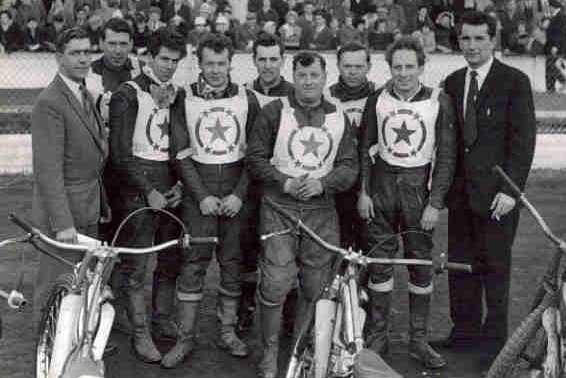 |
| |
| Stoke's Promoter Duo Mike Parker and Reg
Fearman flank the Potters riders. Ray is the shorter heavy set guy
4th from the right |
| |
|
I
first saw Ray in action at Eastbourne in 1947 when Stoke visited
Arlington for a Division Three match. I was a schoolboy taken to
the Sussex track as a special treat - and to see Wimbledon loanees
like Dennis Grey, Harry Saunders and Jimmy Coy in action for the
Eagles. |
| |
|
But
it was Harris who caught my attention. He was a stocky little man,
unlike the slimmer riders turning out for both sides. But in
action, he was hard riding and courageous. I can now understand
why he was to become so well-loved by fans at the old
long-demolished Sun Street Stadium. And also how, because of his
stocky appearance, he became lovingly known as the ‘Portly
Potter.” |
| |
|
It
was 10 years later that I next saw him - at London’s Liverpool
Street Station. I was then a negotiator organising trips to
Holland (in slight conjunction with Phil Bishop), and to Germany,
Denmark and France. |
| |
|
In
May 1957, I had arranged for three riders to compete at Bremen and
Oldenburg in Germany. Two of them were Colin Gooddy and Pat
Flanagan. The other was Ray Harris. |
| |
|
We
smiled when Ray turned up - resplendent in sandals, baggy grey
flannels, a blazer and open-neck white shirt. We also smirked
knowingly when we saw his bike - it had a rear suspension unit
fitted. Inwardly we all thought - ‘what sort of speedway rider is
this?’ |
| |
|
When
we got to Germany we found out. Flanagan and Gooddy raced
conventional bikes on the two bumpy German tracks. They struggled
for points. Harris revelled in the conditions and took top place
behind the Polish star Marian Kaiser at both meetings. Only the
home-bred German favourite Hans Jager could live with Kaiser and
Harris and his rear suspension on track. Harris’ hard-riding
no-nonsense style gained from the tougher grounding of British
league racing saw us nick-name him ‘Bomber’ for his brave style of
riding. |
| |
|
He
had a fine sense of humour - as did his three companions. With
some shame I now recall an incident late at night in a hotel
corridor. I found an old tin bath, persuaded Harris to sit in it,
then with Gooddy and Flanagan pushed him up and down the corridor
making sounds we though were like speedway bikes revving up. The
other residents - very understandably were annoyed. Suffice to
stay, we moved on to a new hotel the next day. |
| |
|
Off-track, Harris had a love for ‘scrumpy’ cider. He told us what
a marvellous drink it was. One-time Wimbledon team boss Dingle
Brown recalls: “When I was a 1960s junior at Stoke, Ray always
used to bring me some ‘scrumpy’ which he fermented in a barrel at
his home. It was potent stuff”. |
|
|
| |
|
| |
| |
Bill
Longley
Australian |
|
|
|
|
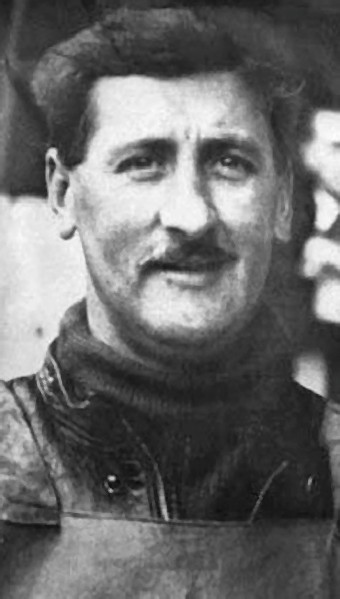
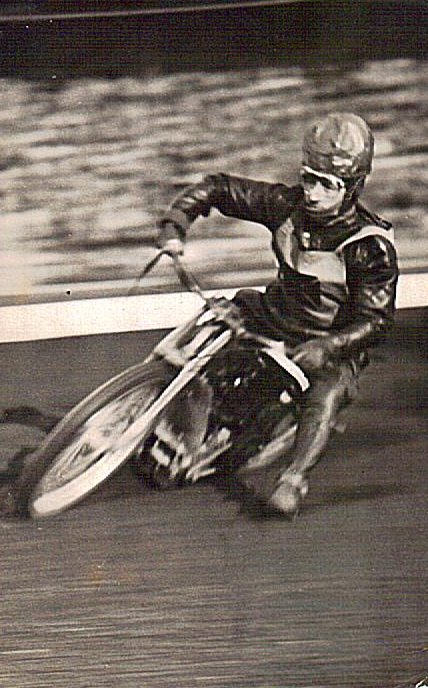 |
|
|
|
Bill Longley - A Real Gentleman on and off the Track. "Little" Bill Longley above left, not much over 5 feet tall
and in New Cross colours above right |
| |
|
John Hyam says: Former New Cross and Australia speedway star Bill
Longley was 93 years old when he died on Friday, April 29, 2005 in
a Brisbane, Queensland residential home. |
| |
|
As with so many of the sport’s stars whose careers scanned the
pre- and post-war years, Longley is little more than a name in the
records books to modern era fans. |
| |
|
But for those who saw diminutive Longley in action, he rates
alongside other greats of this time - Vic and Ray Duggan, Aub
Lawson, Frank Dolan, Max Grosskreutz and his New Cross team mate
Ron Johnson. The passage of time - nearly 60 years - means there
are few who saw these great riders. I did and feel that Longley’s
placing with them is more than justified. |
| |
|
Although he was an Australian, Longley established strong links
with south London, where he lived in Lewisham for nearly 25 years.
He only returned to Australia with his wife Kay in 1965 when his
father was taken ill. |
| |
|
Before taking up speedway in 1937, Longley was a sidecar racing
driver in road, trials and grass track events. He raced sidecars
until 1936, in which he climaxed his career in this discipline
by winning the Australian grass-track title. |
| |
|
He turned to speedway at the Melbourne Motordrome in January 1937
and made such sensational progress that he finished as winner of
the season’s points championship. On the basis of this, New Cross
rider Clem Mitchell recommended Longley to the London track. |
| |
|
Longley,
who stood just 5ft 2ins tall, quickly became a big favourite at
the Old Kent Road track where the supporters lovingly dubbed him
‘Little Bill.’ |
| |
|
Longley was a member of the New Cross team which won the National
League championship in 1938 and again in 1948. When the Rangers
won the title for a second time, Longley and Johnson were the only
members of the original title-winning team left. Longley took over
the captaincy of the New Cross team in late 1949 when Johnson
crashed and fractured his skull in a crash at Wimbledon. |
| |
|
When World War Two started in September 1939, Longley tried
unsuccessfully to return to Australia. He then joined the RAF as a
physical training instructor. |
| |
|
He has a vivid speedway memory of the first months of the war.
“There was no racing for about six months when it was decided to
hold a championship meeting at Crystal Palace at Easter 1940. This
was the last ever meeting at the track. I won it with a 15-point
maximum,” he said in an interview in 2003. |
| |
|
League speedway resumed in 1946 and Longley was allocated to
Bradford. The following season he returned to New Cross in a
triangular deal taking Les Wotton from New Cross to Wimbledon,
while Dons’ Oliver Hart joined Bradford. |
| |
| This
was a golden era in Longley’s career. He rode 53 times for
Australia in tests against England in both countries and was
captain of the side nine times. |
| |
| Nor
was Longley without achievement at individual level. He reached
all three finals of the British Championship in 1946, 1947 and
1948. The peak of his form in this event was in 1947 when he
scored 11 points for third place behind Jack Parker who defeated
Bill Kitchen for the title after both tied on 14 points. |
| |
|
Longley also qualified for the first post-war World Championship
in 1949, sharing joint-seventh place on eight points with fellow
countryman Aub Lawson. |
| |
| When
New Cross closed in June 1953, Longley had brief spells with
Wimbledon and Rayleigh before retiring. |
| |
| Apart
from his British and Australian speedway racing, Longley also
competed in Holland, Czechoslovakia and Germany while in 1954 he
contested the Finnish ice racing season. |
| |
|
One of his big disappointments
was not to win an Australian championship. “The nearest I got was
in the 1949 Australian three-lap Championship at Melbourne when I
tied with Bill Kitchen but he beat me in a decider,” he said.
|
| |
|
Longley was also involved with speedway off-tack, in the early
post-war seasons working as a test team selector alongside Arthur
Simcock of the Australian Speedway Control Board. |
| |
|
And another off-track happening for Longley was in the early 1950s
when he became one of the first people in south London to open and
own a launderette! “They were a rarity in those days, but gave
people the chance to not only do their washing but to have a chat
about things. I met quite a few New Cross speedway supporters,” he
recalled years later. |
| |
|
In 1983, Longley started to work as a Justice of the Peace for the
Queensland Police Force and only retired from this voluntary post
in early 2004. |
| |
|
So far as speedway was concerned, one of his memorable
achievements came in June 1939 when the Duchess of Kent attended a
meeting at West Ham. “I always cherish the fact that I was the
first Australian speedway rider to win a trophy in the presence of
royalty,” Longley said. |
| |
| |
|
| |
| |
John Hyam's Review Of Norman Jacobs' Book
|
| |
| On New Cross
Speedway |
| |
|
John Hyam says: New Cross Speedway - Out Of The Frying Pan by
Norman Jacobs.
The book, originally published in 2008 is still available.
Out of the Frying Pan: The Story of
the New Cross Speedway
Here is my review of Norman's book as it appeared in the 'South
London Press' at time of publication: - |
| |
|
John Hyam continues: I fell in love for the first time on Wednesday,
April 17, 1946. |
|
Not with a glamorous girl but a whirlwind motorcycle sport. And we are
still together after all these years. That night I saw speedway
for the first time and its magic has stayed with me ever since. |
| |
|
I was 13-years-old and knew so little about the sport that when I saw the
riders leaving the pits for the first race parade, I thought they
were racing. That changed in less than a minute when they lined
upon the starting grid. The track lights dimmed, the tapes rose
and four temporarily stationary gladiators roared into the first
bend, spewing cinders as they broadsided the turn. |
| |
|
Ron Johnson, one of the great names of New Cross, and his partner Phil
Bishop took a 5-1 heat win from rivals Ron Clarke and an
engine-failure hit Jack Parker. But my searing memory of the
meeting was when announcer Cecil Smith gave the time of a scratch
race as "Clickety-click-point click" for 66.6 seconds. |
| |
|
Sadly, the new venture failed to catch on with fans, and the track folded
for the last time on August 2, they lost 41-37 to Poole. Three
nights later in a last-ever match the Rangers slumped 51-27 in
Dorset. |
| |
| The last team to wear the New Cross colours included established
lower-league stars like Jimmy Squibb, Bob Dugard and Stan Stevens.
And, good as they were at this level, older fans with memories of
top international aces like Johnson, Jack Milne, Cyril and Bert
Roger, Barry Briggs, Tommy Farndon & Co failed to accept a lower
form of racing. They wanted the very best. |
| |
| And, as leading speedway historian Norman Jacobs recalls in his latest
book, the Rangers had their fair share of speedway's greatest
names. Originally, the first promoters, Freddie Mockford and Cecil
Smith, had promoted at Crystal Palace. However, in 1933 they had a
disagreement with the trustees of the Palace over the rent. So
they went into an agreement to introduce speedway at the then
newly opened New Cross Stadium in Ilderton Road, Peckham, for the
1934 season. |
| |
| Jacobs neatly compartmentalises the New Cross story into four sections:
(1) How it started; (2) The 1930s; (3) Post-war at New Cross; (4)
The revival. They span 30 years, but taking out the four war years
(1940-44) and the six dormant years, speedway only took place over
20 seasons. And the pre and immediate post-war seasons were a
golden time for the sport. |
| |
| In pre-war years, speedway was sport's greatest crowd-puller. Crowds of
30,000 were commonplace for many meetings until the sport ground
to a halt at the start of World War Two in September 1939. And,
after a handful of open meetings at New Cross following the end of
the war in May 1945, it was very much business as usual when
league racing resumed in April 1946. |
| |
| While in pre-war years there was an atmosphere of romance in regard to
the leather-clad gladiators on bikes, there were also moments of
great tragedy. In its second season at New Cross, the rider who
many claim is the greatest ever England rider, Tommy Farndon died
after a crash on Wednesday, August 28, 1935. It happened in the
final of the second-half's New Cross scratch race. Farndon and his
New Cross team mates Johnson and Stan Greatrex were the starters
along with West Ham's Bluey Wilkinson. |
| |
| On the third lap, Johnson hit the safety fence on the back straight.
Farndon, who was close behind, hit his team-mate and was thrown
over his bike's handlebars, landing heavily on his head. Both were
rushed to the Miller Hospital at Greenwich. Johnson was discharged
later, but Farndon was found to be in a critical condition. |
| |
| The hospital was besieged by hundreds of people waiting for news. Regular
bulletins about his condition were posted on the hospital gates
and bus and tram drivers stopped their vehicles so that passengers
could read about Farndon. The rider died two days later without
regaining consciousness. Many fans outside the hospital collapsed
with grief and were given medical attention. At the time of his
funeral, thousands lined the route. |
| |
| The book is given the title title 'Out Of The Frying Pan' because of the
size of the original track, just 262 yards and nearly circular. It
provided extremely exciting racing with riders virtually in a
continuous broadside. Probably the most spectacular exponent
of broadsiding was legtrailer George Newton. |
| |
|
His career was halted in 1938 when he suffered a serious chest infection
and had a lung removed. Ten years later, Newton was back with New
Cross, but just as he was finding his pre-war form, he was taken
ill again. He never rode again for New Cross, but for some years
was a leading rider at several second division tracks. |
| |
|
New Cross gave speedway its second world champion when American ace Jack
Milne won the title in 1937. The team won the National League
championship in 1938 and repeated the feat 10 years later. |
| |
| The book also deals with the career of Ron Johnson, the charismatic
Australian who played such a major role in cementing the golden
years of the Rangers. His career was of the highest caliber until
a crash at Wimbledon on August 1 1949 when he fractured his skull.
After that, he struggled to live up to his colourful reputation as
one of the sport's all-time greats. |
| |
|
In 1951, Johnson returned to Australia, and after a successful come-back
was briefly with West Ham in 1955, then needed the help of friends
and supporters to pay his fare home. After New Cross reopened in
1959, the following season Johnson made another come-back but was
outclassed even in junior events. |
| |
|
In 1963, when the Rangers reopened in the Provincial League, then
54-years-old, Johnson was back for another trial but failed to
make the team. He made his last appearance at New Cross on May 14
when he beat Phil Bishop 2-1 in a match race series. Johnson died
in Australia in 1983. |
| |
|
This book is packed with anecdotes, records, and stories of the greatest
names to grace speedway in an era when it was rated among the
highest attended sport's in Britain. "Out Of The Frying Pan"
covers the history of New Cross in-depth, outlining great
team and individual performances, as well as revealing the roles
of the promoters in maintaining the sport at a renowned speedway
venue. |
| |
| |
|
| |
| |
The Closure Of
New
Cross Speedway
June 1953 |
| |
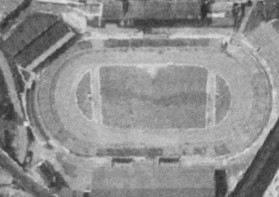 |
| |
| John Hyam says: The
event that had the most profound shock on my speedway life was the
closure of New Cross in June 1953. |
| |
|
To me, it had always seemed that speedway there would go on
forever. Such is the innocence of life in its formative years. I
had been a regular at the track from the opening meeting of the
1946 season and there had always been New Cross speedway...it even
followed me through my two years National Service in the RAF
between 1951 and 1952. |
| |
|
Then one day - New Cross had gone from the sport. It was the first
departure from the British scene of a major club, a track which
had staged many England-Australia tests matches. Some of
speedway's greatest riders had worn the orange race jacket with
the black Maltese cross. From the pre-war giants like Tom Farndon,
Jack Milne, George Newton, Ron Johnson and then, in post-war
seasons, the famous Roger brothers - Cyril, Bert and Bob, Eric
French and many more. |
|
|
|
|
|
|
|
|
|
|
Tom Farndon |
|
|
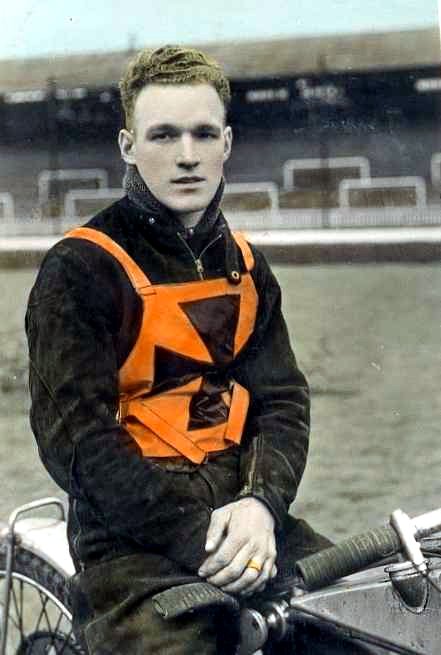 |
| Courtesy of John Spoor |
| |
| Tom Farndon modelling the famous New
Cross race jacket |
| |
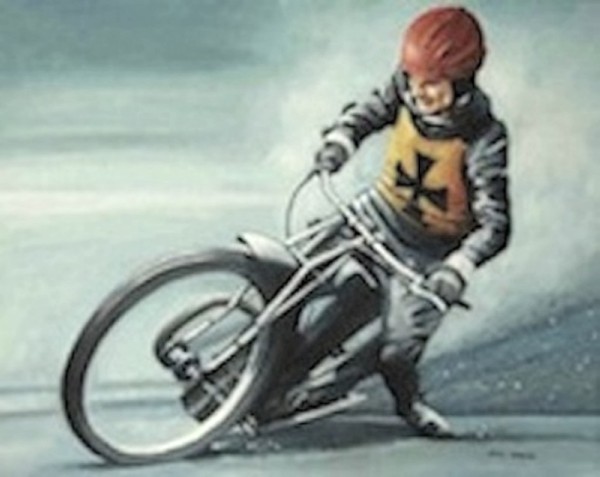 |
| Courtesy of John Hyam |
| |
| Artwork: No! it isn't a photo. Painting of Tom Farndon by John
Proud |
| |
| |
|
John Hyam continues: Then on that June day in 1953, the month that
the Queen had her Coronation, New Cross speedway was no more. |
| |
| The
crux of the matter was that promoter Fred Mockford had been
refused permission to sign then emergent Swedish star Olle Nygren.
He told the Control Board that if Nygren could not join the
Rangers on a permanent basis he would close the track. |
| |
|
For more than 60 years, I believed the race winner was Mick Mitchell, who
away from the track was a school caretaker in Lewisham. Recently,
I found out that Mitchell was not in that race - the winner was
Belle Vue's Wally Llloyd. And, just for the record, the challenge
match New Cross won the challenge match 46-37. |
| |
|
For the next 17 years, New Cross speedway was a major part of my life. I
was horrified when they closed in 1953 after promoter Fred
Mockford was refused permission to sign the Swedish star Olle
Nygren to srengthen the Rangers. Six years later, speedway was
back at New Cross. |
| |
|
After a handful of open meetings in 1959, they raced for two seasons in
the National League. The winter of 1961-62 saw another closedown,
then Wally Mawdsley and Pete Lansdale reopened the track for
Provincial League racing in 1963. |
| |
| |
|
| |
| |
| Olle Nygren |
| |
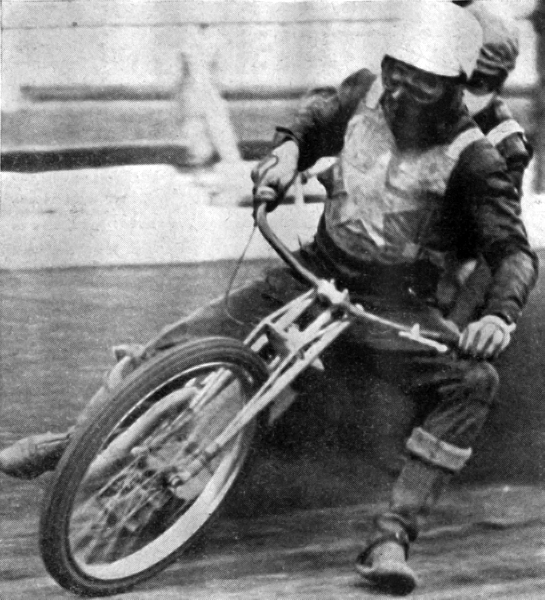 |
| |
| I
don't think that officialdom took his threat seriously. They
refused to let New Cross sign Nygren and that was the end. I know
there were later attempts at a revival, bridging 1959 into the
early 1960s to revive speedway down the Old Kent Road, but it was
never the same, It was something akin to the more recent
Conference League revival at Wimbledon in 2002 which, despite
honest promotional endeavours, never matched the truly great days
of the Dons and again a host of legendary riders - Barry Briggs,
Ronnie Moore, Tommy Jansson and many more. |
| |
|
It has always been my opinion that when New Cross closed in 1953,
the big decline of speedway followed. The sport imploded. It
crashed like a house of playing cards. The New Cross closure led
on to a fateful period when from a time with near 40 tracks
running in three leagues, just a handful survived. And, but for
the advent of Mike Parker and his organisational ability to found
the Provincial League in 1960, speedway might well have died out
in Britain. |
| |
| |
|
| |
| |
| Mike Parker |
| |
 |
| |
| Mike Parker Newcastle promoter with his
greatest signing Ivan Mauger. Parker tried sidecars and
midget cars at his Newcastle circuit Brough Park but Tyneside made
it clear that they only wanted speedway at Brough Park. |
| |
|
Unusually, when Parker arrived on the speedway scene his primary
interest was midget car racing and it was his intention to stage
the four-wheel sport on many of the then closed Northern tracks.
He then opted to trying to stage mixed formula meetings with
speedway, sidecars and midgets on the programmes but again had
little support. |
| |
|
In the end, he was persuaded to concentrate on speedway and the
big 1960s revival took place. It ended seven seasons in the
sporting wilderness for the sport and counter- balanced a decline
that could be traced back to the shutdown of New Cross when a
blinkered Control Board refused them permission to to strengthen
its side by signing a Swedish speedway rider. |
|
|
| |
The Website's John Skinner, a Newcastle
fan, says: Mike Parker and partner Reg Fearman reopened
Brough Park Newcastle Speedway in 1961. Parker took control
of Newcastle whilst Fearman took on Middlesbrough under the duos
umbrella although the two Promoting partners split eventually.
Mike proved to be successful and Newcastle fans over 60
yrs old will remember him signing Ivan Mauger, Brian Brett and Ole
Olsen. But we fans also remember Parker and Ivan Mauger
having conflicting issues leading to the departure of the worlds
greatest rider. World Champion Ivan left Newcastle at the
end of 1968. Ole in 1969 filled the "Ivan" gap then Parker
decided to go elsewhere, Wolverhampton promised a better bet
financially than him remaining at Newcastle so he ruthlessly
pulled the Newcastle plug taking the Diamonds star Ole Olsen with
him.
|
| |
| |
|
| |
| |
|
Johnny Greenwood |
| |
| |
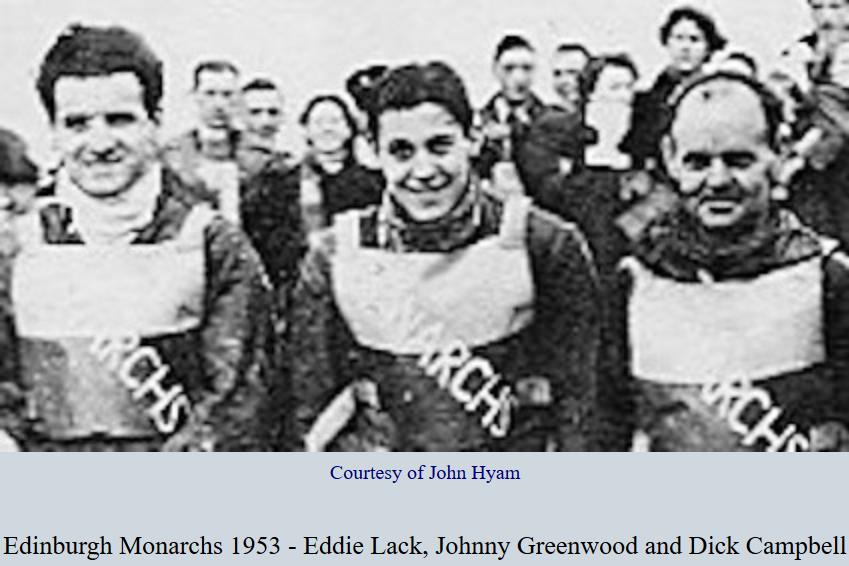 |
|
|
| John Hyam says:
One of speedway's tragedies is when a potentially brilliant career
is shattered by injury. There have been many instances over the
years, and one that especially stands out in my mind concerns
Johnny Greenwood. |
| |
|
He was just 21 years old when his career came to a shuddering end
in 1956 more than 6,000 miles away from his home at Keighley in
Yorkshire. It happened at Adelaide when he broke his right arm
which was left partially paralysed bringing an abrupt end to a
promising career. |
| |
|
Bill Walsh, a former cycle speedway rider from Keighley in
Yorkshire, has been a lifelong friend of Greenwood. Bill said, "I
first met Johnny when we were pupils at Keighley Boys Grammar
School and we are still in regular contact". |
| |
|
He was taken to ride in Australia by Fred Tracey, the old
Walthamstow and Coventry rider, who was then the Melbourne
promoter. He did so well at Melbourne that it was decided to take
Johnny on to race at Adelaide where Jack Young was the big star.
And Johnny's winning ways meant that he was soon a back-marker off
200 yards in handicap races. Only Young was given a bigger
handicap - 20 yards behind Greenwood. |
| |
|
On the night of his accident, Johnny was going for an unbeaten
run. In his last race of the meeting he passed Bob 'Cowboy' Sharp
on the third lap to go in front. Then, for some unexplained
reason, Johnny seemed to lose concentration and slammed into the
safety fence on the third bend of the last lap.' |
| |
|
Walsh added, "He was badly injured and severely damaged the nerves
in his arm which eventually led to the permanent loss of it. At 21
it was as bad as it could get." |
| |
|
As a 17-year-old. Greenwood had been a protégé of Ernie Appleby at
his Newton Heath training track near Manchester in 1953. Before
the year was out Johnny had rides with Liverpool in National
League Division Two, then finished the season at Southern League
track St Austell. |
| |
| At the
start of 1954, Greenwood was with Edinburgh in their brief early
season in the National League Division Two where he averaged 8.29
points in four league matches. His debut meeting at Meadowbank was
in a pairs event where he took 13 points in his five rides and
only renowned Scottish stars Ken McKinlay and Don Cuppleditch beat
him. It made Greenwood an overnight favourite with Monarchs' fans. |
| |
| A
feature of Greenwood's brief spell at Edinburgh was his fiery
style of riding when partnered with Don Cuppleditch. When
Cuppleditch led in races, Greenwood was always hot on his tail,
but when the placing's were reversed there was no way the heat
leader could get back in front. And when Edinburgh faced Leicester
in the National Trophy, Greenwood returned paid double figure
scores. |
| |
| A
feature of Greenwood's attitude to racing was that he hated to be
passed when in front. McKinlay once said, "After a race in which
he had been overtaken, Johnny asked me to explain just how his
rival had managed to get past him. He was a true racer and
dedicated to winning." |
| |
|
The closure of Edinburgh early in the season saw Greenwood move to
Exeter, before the calls of National Service took him to Iraq for
two years. Upon demob and with the 1956 season coming to an end,
Greenwood joined Division One side Bradford, making just two
appearances. And it was while racing at Bradford that Aussie track
boss Fred Tracey was captivated by the youngster's spectacular
style and invited him to go to Australia - a venture that was to
end his racing career. |
| |
|
The serious injury did not see an end to Greenwood's love of
life generally nor of speedway. He married and raised two sons
and still takes a keen interest in speedway at Grand Prix
level, and especially likes to see the meetings in Poland.
Additionally, he is an enthusiastic member of the World
Speedway Riders Association
|
| |
|
|
| |
| |
| |
|
Jack"Red"Monteith |
| |
 |
|
Courtesy of John Hyam |
| |
| John Hyam says:
The death in 2010 of Jack 'Red' Monteith passed virtually
unnoticed. But he was a well-known character on the Scottish
scene.
According to historian Jim Henry, Red was a well-loved character
at White City Glasgow in the early 1950s, where he graduated to
speedway after spells as both an ice hockey player and cycle
speedway rider of some note. |
| |
|
Henry said, "His
antics in his novice days at White City are legend and he was as
wild as Joe 'Whaler' Ferguson at times. He was loved by the fans
and few left the stadium before he raced in the second half."
Jim added, "Red had a few outings for Tigers in the 1950s, rode at
Motherwell in 1958, then came back to help out Edinburgh in 1963.
Then he returned to Glasgow when they re-opened in 1964". |
| |
| |
| "Red" In Glasgow Colours |
| |
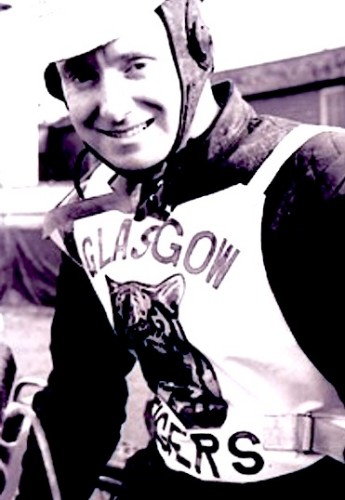 |
| Courtesy of John Hyam |
| |
|
"The early Scottish visits of the 'Men in Black' to Scotland saw
Red back on the track and loving it."
Henry claimed, "Glasgow fans can thank Red for his efforts to save
speedway in the mid-1990s when he was heavily involved in
bringing Brian Sands to promote speedway at Glasgow." |
| |
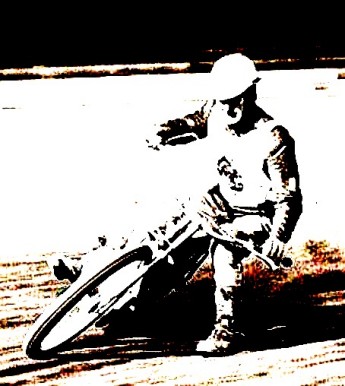 |
| Courtesy of John Hyam |
| |
| |
|
Jim Henry also has an amusing tale about Red. He said, "My
favourite story, told by Red in his own quiet way, is about an
incident in 1963 when he was travelling from Glasgow to Edinburgh
on a motorbike and sidecar with his speedway bike on the sidecar
platform and his mechanic riding pillion. |
| |
"As they bumped over the tram lines at
Haymarket in Edinburgh, the mechanic's false
teeth were jarred out his mouth and landed on
the road. Alerted to the problem, Red stopped.
His mechanic managed to retrieve his dentures,
narrowly saving them from being run over by a
bus, before replacing them in his mouth, then
carrying on to race at Edinburgh."
|
| |
| |
|
| |
| |
| Wal Morton |
| |
 |
| Courtesy of John Spoor |
| |
| Wal at Wimbledon in 1936 |
| |
|
John Hyam says: Wal Morton's speedway career spanned four decades.
From starting as a novice at Coventry in 1932, he turned out for
the last time in two second-half races at Ipswich in 1965. |
| |
| It
was no story book ending - he came last in his first ride, then
managed a third in his farewell to the sport. In his 33 years
association with speedway, Morton managed to progress from the
pioneering era of the 1930s and 1940s into the classic speedway
era of the 1950s and 1960s. |
| |
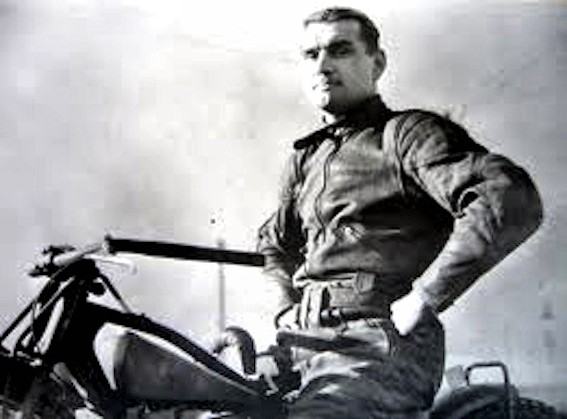 |
| Courtesy of John Hyam |
| |
| Wal Morton Glasgow 1946 |
| |
|
Fittingly, over the years he rubbed shoulders with some of the
sport's greatest names. In pre-war seasons at West Ham he rode
alongside 'Bluey' Wilkinson, then at Wimbledon was a team-mate of
another legendary Australian star Vic Huxley. |
| |
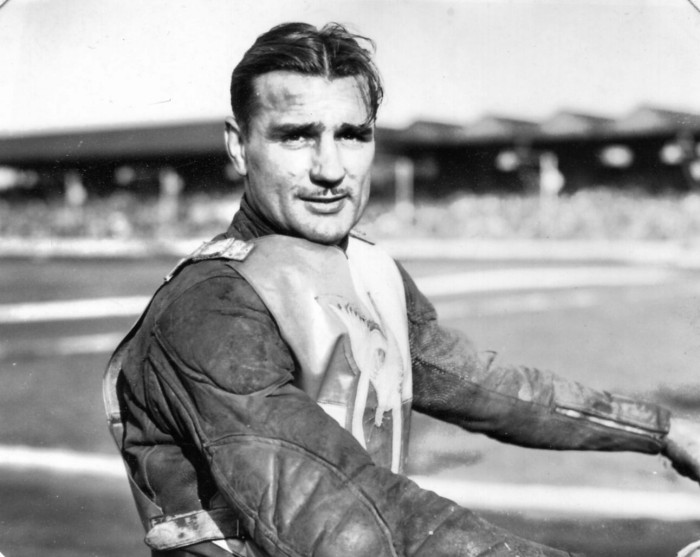 |
| Courtesy of John Hyam |
| |
| Wal Morton Harringay 1947 |
| |
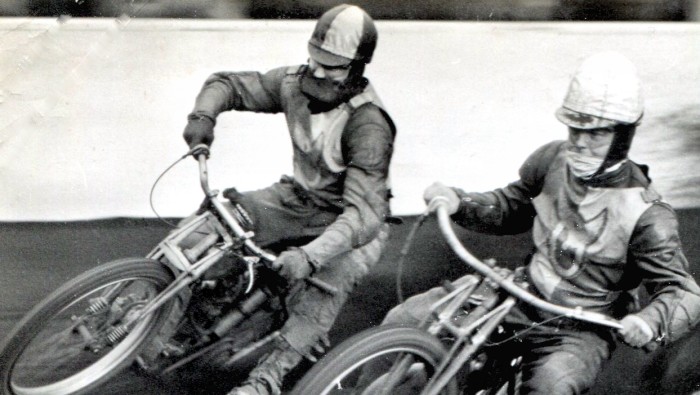 |
| Courtesy of John Hyam |
| |
| Wal Morton & Frank Dolan |
| |
|
The post-war years saw him as a team mate of Vic Duggan at
Harringay in 1947, then in 1952, when back at West Ham, was in a
side that included Jack Young. Towards the end of the 1950s,
Morton was at Norwich as a team mate of Ove Fundin. And, of
course, over the many seasons - and at many tracks - Morton was in
sides that included many other famous riders, too many to tabulate
here. |
| |
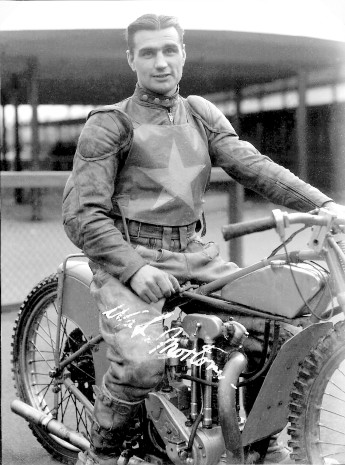 |
| Courtesy of John Hyam |
| |
| |
Wal Morton Norwich
Mid 1950s |
| |
|
In the early 1960s, Morton's career had something of a resurgence.
In 1960, took over the captaincy of the struggling Liverpool side
and finished as their top scorer. He was hailed as 'veteran of the
year' by 'Speedway Digest', the leading annual of that period. |
| |
|
After Liverpool, he rode for Bradford and Middlesbrough. At the
latter track he created an unique first when he turned out for a
race with Geoff Pymar - another who had by then seen his 50th
birthday. It was the first time the combined ages of two race
partners exceeded 100 years. |
| |
|
Morton's last full season was at Hackney in 1963, although he
appeared in second-half races over the next two seasons until the
farewell rides at Ipswich. It brought to an end a career in which
he was linked with more than a dozen clubs. |
| |
|
Morton died on April 21 1995 aged 85 years. It seemed he was by
then one of speedway's forgotten men. Historian Mike Kemp said, "I
found Wal was buried in an unmarked grave at St Edmund's Church,
Old Costessey, Norwich in 2003. |
| |
|
It took two years and a lot of help to raise enough money in
donations from speedway supporters to provide a stone costing
£649 which was put in place in March 2005 as a tribute to
'Wandering Wal.' It was fully deserved for a man who raced for so
many clubs. |
| |
 |
| Photo Courtesy of the : Mike Kemp Collection |
| |
|
Yet there might never have been a Wal Morton speedway career.
Before taking up the sport, he was an amateur boxer and held the
Midlands welterweight championship in the early 1930s. Then he saw
a speedway meeting - hung up his gloves - and dedicated his
sporting life to two wheels. |
| |
| |
|
| |
| |
|
Syd van der Vyver |
| |
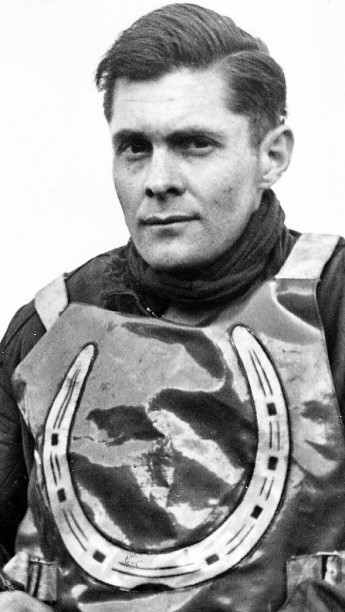 |
| Courtesy of John Hyam |
| |
| Syd in Leicester colours in 1949 |
| |
|
John Hyam says: One of the colourful band of South Africans who
tried their hand in British speedway at the start of the 1950s was
Syd van der Vyver, who had spells with Rayleigh and Leicester.
Sadly, on British tracks he never showed the pace that had made
him such a dashing and spectacular performer in his homeland. |
| |
|
He came to the UK with an impressive South African pedigree,
having been capped in the test series against visiting England in
both the 1948-49 and 1949-50 test series. But away from the track,
he was also highly regarded as a mechanical genius, and between
1948-51 was also chief mechanic to the Johannesburg Pirates, who
were based at South Africa's Wembley Stadium. |
| |
|
South African historian Ken MacLeod tells an amusing item
about van der Vyver's period in charge of the workshops. He
said, "When speedway first started at the stadium, some of the
less sober spectators used the pit wall as a urinal.
|
| |
|
"Syd was watching the racing from the
pit wall when he saw them in action. So he went to the workshop
(out of sight of the spectators) and rigged up a spare generator
and cable, then placed it along the ground where the naughty guys
were performing. As a result, they received a minor shock where
they least expected it. Needless to say, the practice stopped
pretty soon afterwards." |
| |
|
Like his fellow countryman, the 1950s Liverpool star Doug
Serrurier, Syd is also a South African motor sport legend,
although mainly for car racing. Ken Macleod said that on four
wheels van der Vyver was twice South African Drivers champion and
in international races in South Africa he did did very well
against legendary stars like Stirling Moss, Jack Brabham and Jim
Clark. |
| |
|
When van der Vyver died aged 69 years in 1989, a little known
secret about him came to light. Although he was known as Syd, his
first name was found to be neither Sidney or Sydney as one might
expect but was in fact Siegfried. |
| |
| |
| Syd In Action |
| |
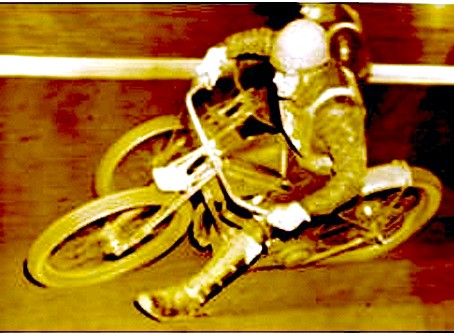 |
| Courtesy of John Hyam |
| |
| |
|
| |
| |
Cyril Maidment
&
The Russian Tourists |
|
|
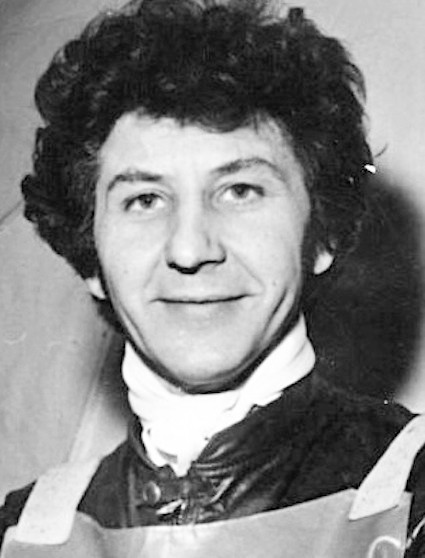 |
| |
|
John Hyam says:Cyril Maidment scored a maximum for Belle Vue
in their 48-30 defeat of Russian tourists Lenningrad Neva.
|
|
|
A FIRST for British racing came in 1968 when a Russian club side
raced against Belle Vue on Saturday July 27 1968, then the
following Tuesday were in action at Leicester. |
| |
|
But it was no fairy tale trip for the Russians - minus top rider
Vladimir Smirnov. The riders from the Lenningrad Neva club went
down 48-30 at the old and much-loved Hyde Road track, then were
completely outsmarted 60-17 at Leicester where only Anatoli Belkin
won a race for the tourists. |
| |
|
The tour was something of a mish-mash in its arrangements,
largely billed as a return for Belle Vue's 1967 racing trip to
what was then the Soviet Union. And it was also inter-linked
with Belle Vue's 40th anniversary and a vague arrangement with
a 1968 tour of Britain by the Russian State Circus.
|
| |
|
At Belle Vue, the Russians started strongly and scored a 5-1 in
heat two through Gennnady Vyonov and Belkin. But sadly the
Russians had a long tail that refused to wag. Three riders -
Vyonov (9), Yuri Lambotski (7) and Belkin (7) scored 23 of their
total. Belle Vue riders scored heavily with Cyril Maidment and
Tommy Roper recording 12 point maximums. |
| |
|
At Leicester, the Russians luck ran out in the second race when
Vyonov crashed heavily, suffering a shoulder injury which forced
him out of the match. With Leicester in full command after that,
Belkin's eight points was nearly half the Russians overall total.
His seven team mates managed just nine points between them. |
| |
|
Maybe that shattering of the Lenningrad team was to have been
expected. Leicester then had a formidable side which included
such stalwarts as Anders Michanek, Ray Wilson, John Boulger
and Norman Storer.
|
|
|
|
|
|
|
|
|
|
|
George Bason |
|
|
 |
|
Courtesy of John Spoor |
|
|
|
|
|
John Hyam says: I was saddened when I heard of the death of George
Bason a few years ago. While he was never a star rider, he was
from that essential band of devoted riders who form the backbone
of the sport. Without so many of this ilk, there would be no
speedway for the stars to shine. |
|
|
|
George was born in Marlow, Buckinghamshire. although an error in a
'Who's Who' in speedway misprinted his birthplace as Harlow, and
that was perpetuated. As a rider he started on the pre-war amateur
tracks at Longmoor (California-in-England) and Oxford (the site of
the present track but much different then) where his opponents
included Lloyd 'Cowboy' Goffe, Billy Newell and Danny Lee. He also
rode at Crystal Palace in open meetings in 1938, and as a junior
when the club briefly raced in the National League Second
Division. |
|
|
|
At the Palace, Bason's career came under the watchful eye of the
South African veteran Keith Harvey, while his rivals in junior
races included Bernard 'Bronco' Slade, Charlie Challis and the
Canadian wrestler turned speedway rider Eddie 'Flash' Barker. |
|
|
|
After the 1939-45 closure of speedway tracks for Hitler's
ill-timed intervention and World War Two, the 1946 rider pooling
took Bason to West Ham, then on to Wembley in August when 'Bronco'
Wilson was injured. At the same time, West Ham were also allocated
Charlie Dugard - the man who established Eastbourne in later
years. Charlie didn't like the West Ham track, and he joined
Wimbledon. Soon afterwards, Bason and Dugard clashed in an
individual meeting at Wimbledon in a pile-up that left both with
broken legs. For a week or so they were also in neighbouring
hospital beds. "That's the nearest we came to being team mates for
a second time that season," Bason told me years later. |
|
|
 |
|
Courtesy of John Hyam |
|
|
|
Southampton 1947 - from left George Bason, Matt Hall, Bert
Croucher, Vic Collins, Jimmy Squibb. |
|
|
|
The 1947 and 1948 seasons saw Bason with Southampton in the
National League Third Division, and in his early Bannister Court
days he briefly succeeded Vic Collins as team captain. By 1949,
Bason was riding for Liverpool, but these were changing times in
the sport. As a legtrailer, Bason needed cinders to utilise his
riding style, but tracks were increasingly using shale to cater
for foot forward riding. As with so many legtrailers, Bason found
it hard to adapt and dropped out of the sport, although he did
make a brief return in the early 1950s at Swindon. |
|
|
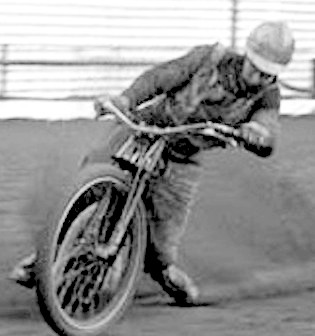 |
|
Courtesy of John Hyam |
|
|
|
George Bason practises at Liverpool in 1949 |
|
|
|
In 1953, he resumed racing in
open meetings at what had been Longmoor, although by then the
Berkshire track was known as California, and in 1954 he was an
early member of their Southern Area League squad. California was
ideal for Bason's style - it was a pure, deep dirt track, and he
revelled in the conditions. But slick tracks like Eastbourne, Rye
House, Ringwood, Aldershot and Brafield saw him floundering and he
dropped out of the California team. But the venue also staged many
open meetings, and Bason continued to turn out in these. |
|
|
|
While at Liverpool in 1949,
Bason had also raced at Antwerp in Belgium, against Reg Duval,
Bill Harris and the Belgian champion Lambert Dock. And with the
decline of chances in England, he switched back to the Continent,
racing in Germany and France until the 1970s. In 1978, Bason was
among VSRA members who took part in the anniversary event at
Hackney. His appearance was brief - he reared on the starting gate
in his demo ride and injured his knee. |
|
|
|
For many years, Bason spent
time encouraging young riders. These included Ron Sharp (New Cross
and Stoke) and Ted Spittles (Ipswich). He was also a regular
spectator at Oxford for many years and for some seasons was also
mechanic for Oxford star Peter Robinson. |
|
|
|
I first got to know Bason in 1954, and have a fond memory of going
to visit him and his family at his small-holding in Marlow,
Buckinghamshire, where he combined vegetable growing with a garage
and speedway bike tuning business. He showed me his collection of
pe-war and post-war speedway magazines and programmes and we also
mulled over his pre-war speedway and grass track racing
activities. One of his favourite pre-war grass venues was Corfe
Mullen in Dorset - even then dominated by Lew Coffin! And Bason
was one of the 1939 pioneers who established speedway for the
first time at Oxford's Cowley Stadium. |
|
|
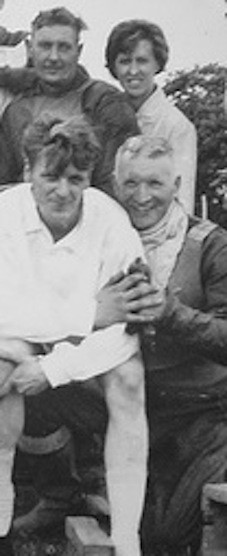 |
|
Courtesy of John Hyam |
|
|
|
In France in 1967 - George Bason, back left, with. front, French
rider Claude Boston and Stan Tebby. |
|
|
|
After that initial meeting at California, I met Bason many times.
He was always a gentlemen and devoted family man. His name
probably hasn't carved a major niche in speedway history, but, as
I said earlier he was - and so were many hundreds like him - part
of the structure upon which the sport is founded. They deserve to
be more than speedway's forgotten men. Bason was 86 years old at
the time of his death in 2003. |
|
|
|
|
|
|
The contents of the site are © and should not be
reproduced elsewhere for financial gain. The contributors to this site
gave the pictures and information on that understanding. If anyone has
any issue or objections to any items on the site please
e-mail
and I will amend or remove the item. Where possible credit
has been given to the owner of each item. |

